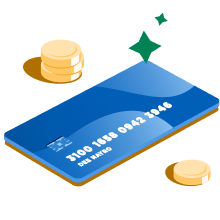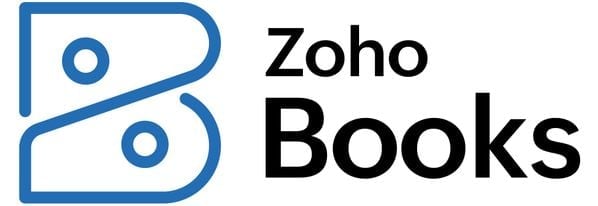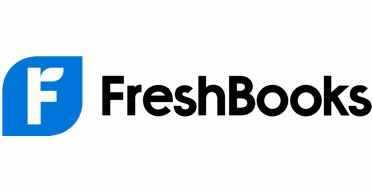What Is Depreciation? Definition, Types, How to Calculate

Many or all of the products featured here are from our partners who compensate us. This influences which products we write about and where and how the product appears on a page. However, this does not influence our evaluations. Our opinions are our own. Here is a list of our partners and here's how we make money.
Depreciation gives you a way to correlate the cost of an asset with its usefulness, or ability to produce revenue, year over year.
Distributing an asset’s cost over its lifespan, instead of recognizing the entire cost at once, gives you a more accurate view of the asset’s value and your business’s profit at the end of the year. It can also have tax benefits.
There are four main depreciation methods: straight-line, units of production, double declining balance and sum of the years’ digits.
If you’re not sure which depreciation method to use for each of your assets, your accountant can be a great resource.
Depreciation is an accounting method that spreads the cost of an asset over its expected useful life to give you a more accurate view of its value and your business’s profitability. As opposed to recording the entire cost of an asset as soon as it’s bought, businesses record depreciation as a periodic expense on the income statement. How much value an asset loses year-over-year depends on which depreciation method your business uses: straight-line, units of production, double declining balance or sum of the years' digits.
Businesses have some control over how they depreciate their assets over time. Good small-business accounting software lets you record depreciation, but the process will probably still require manual calculations. You'll need to understand the ins and outs to choose the right depreciation method for your business.
FEATURED
Types of depreciation
Here are four common methods of calculating annual depreciation expenses, along with when it's best to use them.
1. Straight-line depreciation
This is the most common and simplest depreciation method.
Formula: (Cost of asset – Scrap value of asset) / Useful life of asset = Depreciation expense
Most often used for: Equipment that loses value steadily over time.
Pros: It spreads the expense evenly over each accounting period. It’s also easy to automate the adjusting entry for straight-line depreciation in most accounting software.
Cons: Determining the useful life of the asset requires guesswork. A miscalculation could result in the asset being overvalued for several years.
2. Units of production depreciation
Units of production depreciation is based on how many items a piece of equipment can produce.
Formula: (Number of units produced / Life of asset in units) x (Cost of asset – Scrap value of asset) = Depreciation expense
Most often used for: Manufacturing for equipment that is expected to produce a certain number of items before it's no longer useful.
Pros: Easy to calculate. Because it’s tied to the number of items a piece of equipment produces, it creates a more accurate depreciation calculation.
Cons: You have to keep an accurate record of how many items the equipment has produced. Because production will likely vary from month to month, you’ll need to manually enter this depreciation expense into your accounting software every month. The entry can’t be automated, as it can with straight-line depreciation.
3. Double declining balance depreciation
Double declining balance depreciation is an accelerated depreciation method. Businesses use accelerated methods when dealing with assets that are more productive in their early years. The double declining balance method is often used for equipment when the units of production method is not used.
Formula: 2 x (1/Life of asset) x Book value = Depreciation expense
Most often used for: Vehicles and other assets that lose value quickly. It writes off an asset’s value the quickest.
Pros: Represents the accelerated loss of certain assets’ value more accurately than straight-line depreciation. You’ll get larger tax write-offs at the beginning of the asset’s life, when it’s most productive. Depreciation expenses continually decline as time goes on and the asset is less productive and/or requires greater maintenance (another write-off).
Cons: The calculations are more complex than the other methods. Usually, business owners using accelerated methods will set up a depreciation schedule — a table that shows the depreciation expense for each year of the asset’s life — so they only have to do the calculations once.
4. Sum of the years’ digits depreciation
Sum of the years’ digits depreciation is another accelerated depreciation method. It doesn’t depreciate an asset quite as quickly as double declining balance depreciation, but it does it quicker than straight-line depreciation.
Formula: (Remaining life of the asset / Sum of the years' digits) x (Cost of asset – Scrap value of asset) = Depreciation expense
Most often used for: Assets that could become obsolete quickly.
Pros: Lets you choose how many years you want to depreciate an asset, based on its useful life. This gives you control over the depreciation expense you record each month. Like other accelerated depreciation methods, it also lets you write off more of the asset’s cost earlier on.
Cons: The most difficult depreciation method to calculate. If you use it with the wrong type of asset, you can easily overstate or understate your net income in a given accounting period.
Depreciation examples
Let’s say you purchase a piece of equipment for $260,000. You anticipate using the equipment for eight years, and you anticipate the scrap value will be $20,000. The annual and monthly depreciation expenses for the vehicle using the straight-line depreciation method would be:
($260,000 – $20,000) / 8 = $30,000
$30,000 / 12 months = $2,500 per month
Find out what your annual and monthly depreciation expenses should be using the simplest straight-line method, as well as the three other methods, in the calculator below.
Understanding depreciation in business and accounting
Depreciation is an expense, which means that it appears as a line item on your income statement and reduces net income. Many small-business owners find depreciation confusing because the depreciation expense on the income statement doesn't match cash flow. Remembering the following points can help simplify the concept.
Depreciation is not a cash expense. That is, a business does not write a check to "depreciation." Instead, the business records or recognizes the cost of the asset over time on the income statement.
Accordingly, depreciation usually doesn’t coincide with when the business buys the asset, even if the purchase is made over time with installment payments.
Depreciation matches expenses to a given time period, but it isn’t strictly an accrual-basis concept. This calculation will appear on both cash-basis and accrual-basis financial statements.
Using depreciation to plan for future business expenses
One often-overlooked benefit of properly recognizing depreciation in your financial statements is that the calculation can help you plan for and manage your business’s cash requirements. This is especially helpful if you want to pay cash for future assets rather than take out a business loan to acquire them.
Because you've taken the time to determine the useful life of your equipment for depreciation purposes, you can make an educated assumption about when the business will need to purchase new equipment. The earlier you can start planning for that purchase — perhaps by setting aside cash each month in a business savings account — the easier it will be to replace the equipment when the time comes.
» MORE: Best business budgeting software
Depreciation and taxes
The four methods described above are for managerial and business valuation purposes. Tax depreciation is different from depreciation for managerial purposes.
Tax depreciation follows a system called MACRS, which stands for modified accelerated cost recovery system. MACRS is a form of accelerated depreciation, and the IRS publishes tables for each type of property. Work with your accountant to be sure you’re recording the correct depreciation for your tax return.
On a similar note...

| Product | Starting at | Promotion | Learn more |
|---|---|---|---|
 QuickBooks Online NerdWallet Rating Learn more on QuickBooks' website | $30/month Additional pricing tiers (per month): $60, $90, $200. | 50% off for first three months or free 30-day trial. | Learn more on QuickBooks' website |
 Xero NerdWallet Rating Learn more on Xero's website | $15/month Additional pricing tiers (per month): $42, $78. | 30-day free trial or monthly discount (terms vary). | Learn more on Xero's website |
 Zoho Books NerdWallet Rating Learn more on Zoho Books' website | $0 Additional pricing tiers (per month): $20, $50, $70, $150, $275. | 14-day free trial of the Premium plan. | Learn more on Zoho Books' website |
 FreshBooks NerdWallet Rating Learn more on FreshBooks' website | $19/month Additional pricing tiers (per month): $33, $60, custom. | 30-day free trial or monthly discount (terms vary). | Learn more on FreshBooks' website |


